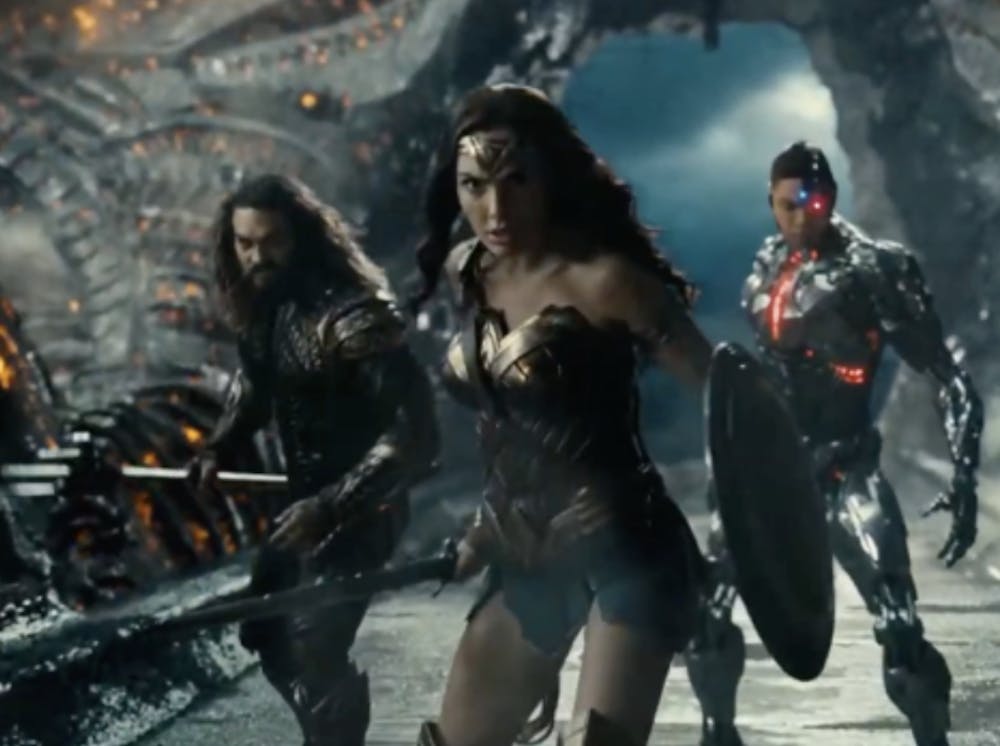The long-awaited “Zack Snyder’s Justice League” is finally here. For any other film, there wouldn’t be as much excitement and anticipation for a movie that was originally released in 2017, but fans of the DC universe have clamored to see Zack Snyder’s original vision for this superhero alliance. After watching both back-to-back, the difference between the original release and the new version is truly night and day, and despite the additional two hours, the investment in a new cut was worth it.
Joss Whedon’s version of “Justice League” was marred by harsh critical reviews and disappointing box office numbers. This version cut down a lot of the original storyline in order to create a more streamlined movie, but it only made “Justice League” feel sloppy, rushed and underdeveloped. Scenes were incoherently strung together at times, and the movie bounced from one hero to the next without any thorough background or significant character development. Frankly, the theatrical version is driven by plot, stripped of any compelling motives and filled with confusing scenes that made me ask: “Did I miss something?”
Zack Snyder’s version addresses just about every issue found in its predecessor. The plot is essentially the same: Batman forms an alliance with the world’s greatest heroes to defend Earth from an alien invasion. However, the additional two hours create a clearer and more engaging journey that fixes many of the original’s mistakes and takes the time to delve into every character’s background and motivation.
All across the board, characters were vitally expanded. We are introduced to heroes like Flash and Cyborg through their complex backgrounds and inherent desires to help other people. We see the Flash speedily save a life while Cyborg hacks his way into giving money to those who need it. Additional scenes like these show us why they are heroes and why Batman is trying to recruit them — a stark contrast to the theatrical version. Lois Lane is no longer a background character part of Batman’s contingency plan in case Superman goes rogue, but rather a fully developed character filled with emotional turmoil from the very beginning of the film.
There are also scenes where, once the super team is together, they have time to meaningfully interact with each other. Aquaman and Flash have a nice heart-to-heart after a painful battle with resurrected Superman, and it’s a moment that makes the Justice League feel like more of a team rather than a ragtag group of emotionless superhumans. Even Superman is given time to process his own resurrection. While he is still limited in his role as the ultimate weapon, his relationships with Lois Lane, Martha and Batman feel more emotional because of the additional scenes dedicated to show how devastated the three felt after his death. These scenes are bright examples of why action movies still need more than just plot-advancing dialogue. The film’s characters and their relationships with one another make us care about the team, so when they work together and risk their lives for the fate of humanity, we actually feel the stakes and root for their success.
Much-needed attention is paid to the film’s villain Steppenwolf, who was originally a vague and uninteresting character, but he transforms into a motivated monster fighting to bring back an even deadlier, ominous villain. He looks a lot more menacing, and he feels a lot more deserving of his fate by the end of the four-hour film.
Even the smaller tweaks were noticeable. Fights were enhanced with a new stellar score from Thomas Holkenborg, though there were moments where the musical additions felt overpowering and unnecessary. Scenes misplaced in the original version were swapped and corrected, which easily eliminated a lot of the confusion from the first version.
The biggest drawbacks to “Justice League” is its uncomfortably long runtime, but the chapter structure allows viewers to break down the movie and space it out like a binge-model TV series. I’d recommend taking plenty of breaks in between, but this version of “Justice League” is worth watching, especially if you want to get the theatrical version out of your head. This version was never supposed to see the light of day, but fans’ push for this mega movie has partially saved the Justice League from embarrassing doom and renewed DC enthusiasts’ faith in what is to come from their favorite superheroes.
Get The Chronicle straight to your inbox
Sign up for our weekly newsletter. Cancel at any time.

